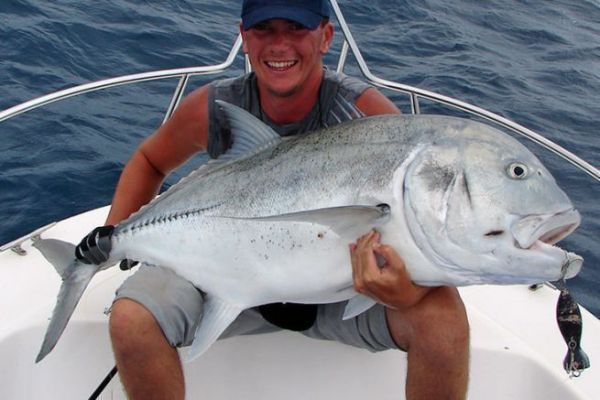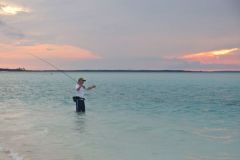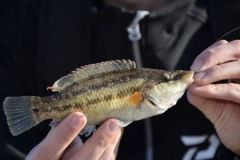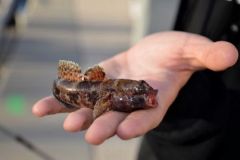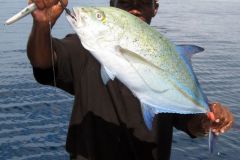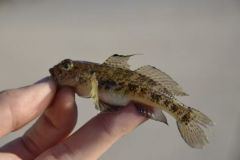Scientific name
Caranx ignobilis (Forsskäl, 1775)
Morphology
The large-headed trevally has a massive silvery body, elevated and compressed laterally. With its large head and wide mouth, it is well suited to hunting. Its eyes are large and dark. Its caudal fin is forked.
Fishing spots
Adult trevally are solitary and inhabit lagoon and offshore reefs. Juveniles are found in estuaries, feeding on crustaceans (crabs and lobsters) and fish at night. Barrier reefs are key feeding grounds.
Fishing techniques
The trevally is a powerful fish appreciated by sport casting and jigging anglers all over the world. The number 1 technique for targeting this fish is popping. This involves casting a popper as close as possible to the coral reef. The jacks swim along the reefs in small schools on the lookout for small fish. This popper, making a maximum of splashes and noise on the surface, disturbs our territorial carnivore, who punishes the unconscious little fish. What follows is a mythical battle with this monster of power. You need to be well equipped (80 lb casting rod to target the biggest trevally) and have a good skipper who will move the boat if necessary and assist you during the fight.
The other method is jigging, to target trevally in depths of 10 to 50 m. You'll need a 0.80 lb braid and a 2 m leader in 150 to 200 lb nylon. The drag is set between 8 and 12 kg to target the biggest specimens.
Reproduction
The GT trevally reaches sexual maturity between 60 and 95 cm at the age of 3 to 5 years. Females release several thousand eggs near reefs, some of which are fertilized by males and then drift for 1 month. Around 1 larva in 1,000 survives this drifting period. Juvenile trevally then enter shallow reef waters to grow. At this stage, until they are 2 or 3 years old, 1 juvenile in 100 survives predation.
Size and weight
- Catch size (legal minimum): none, I recommend 50 cm
- Size at sexual maturity: 60 to 95 cm
- Average size: 60 to 90 cm
- Maximum height/weight: 1.75 m (80 kg)
- French record: 41.50 kg (La Réunion, 26/01/2003)
- World record: 72.8 kg - 1.68 m (Kagoshima, Japan, 06/06/2006)
Good to know
Large individuals can be carriers of ciguatera, known as "scrape disease", particularly when jacks are caught near coral reefs. This food poisoning is linked to the ingestion of fish caught near tropical or subtropical reefs. But beware: jackfish migrations can be long, and fish carrying the toxin are sometimes caught far from the reefs.
